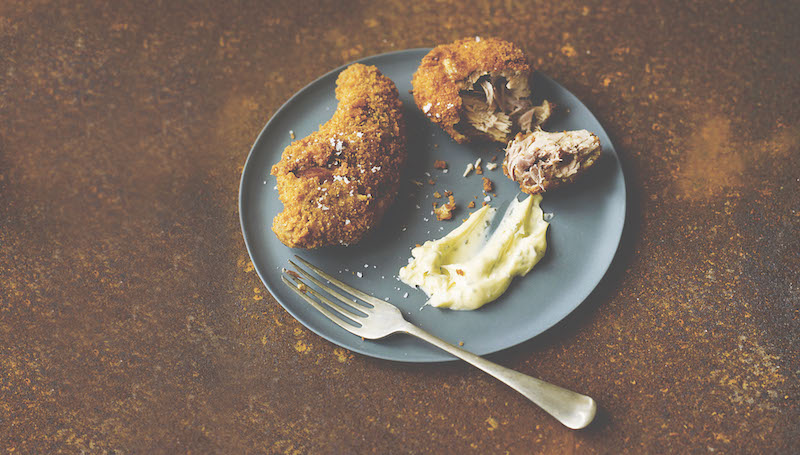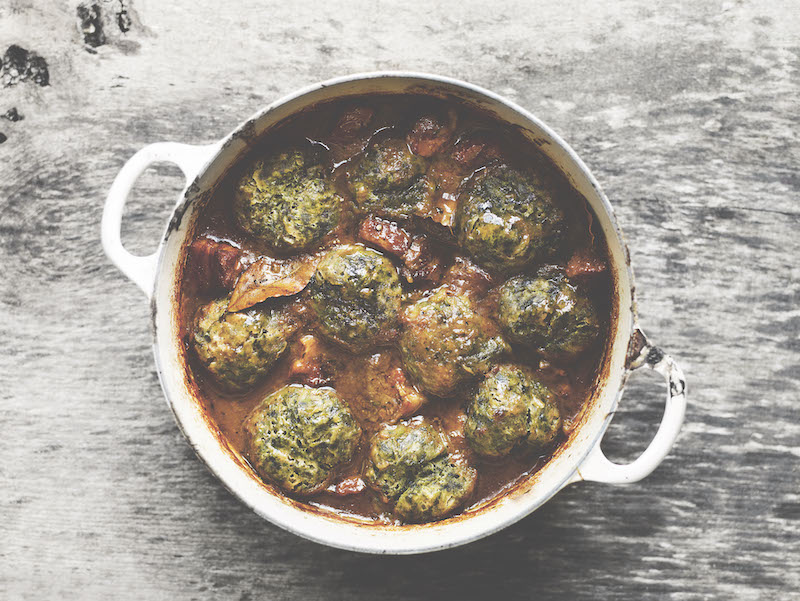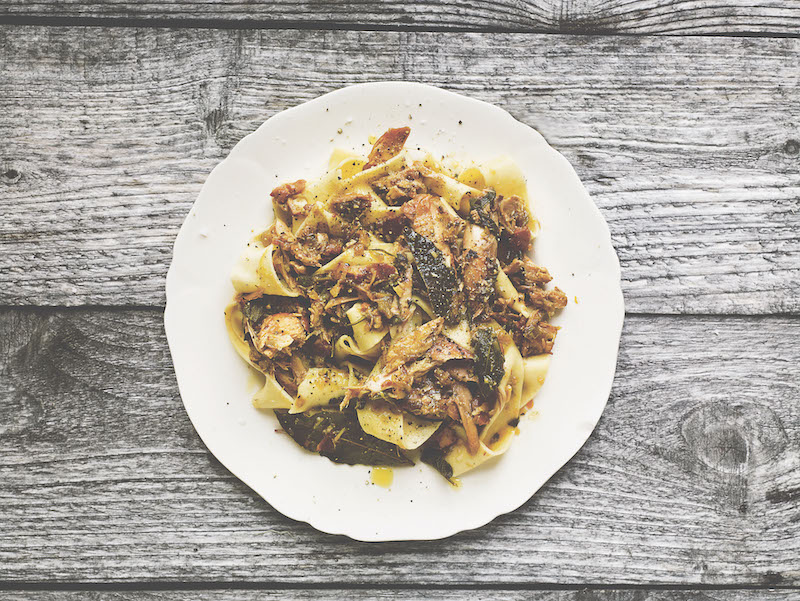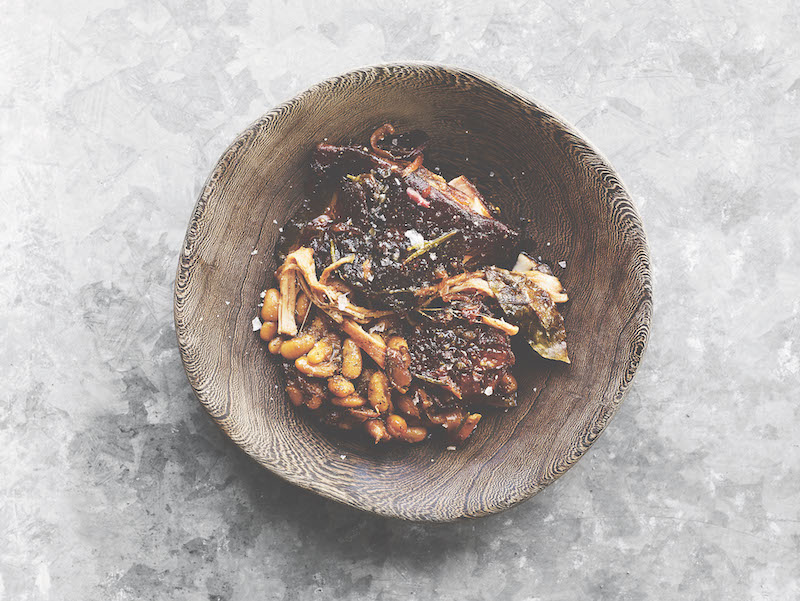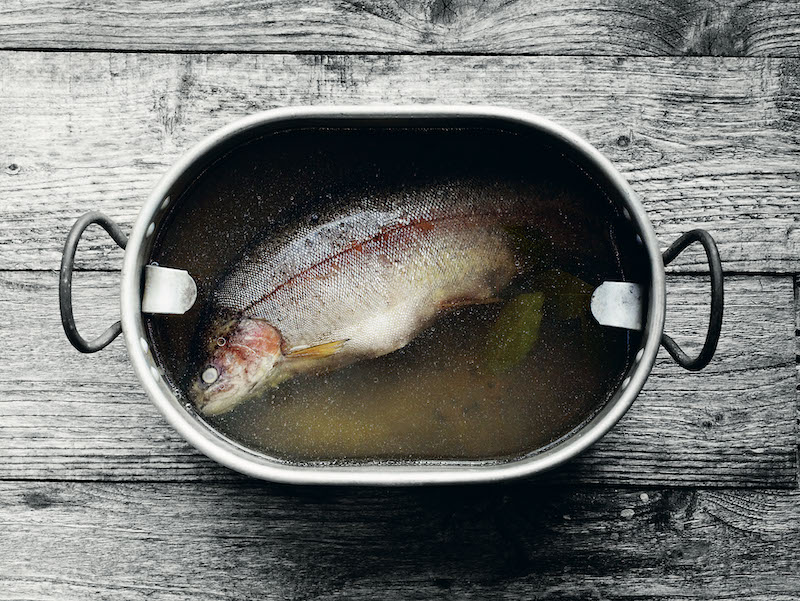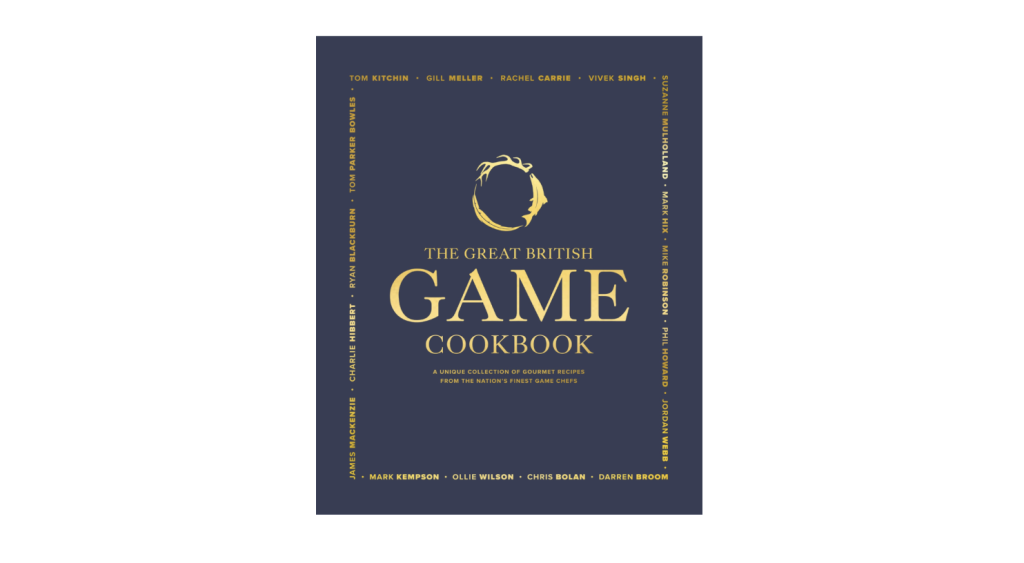Gill’s game plan
As head chef at River Cottage in Dorset, Gill Meller's focus is on simple dishes made from natural, abundant foods.
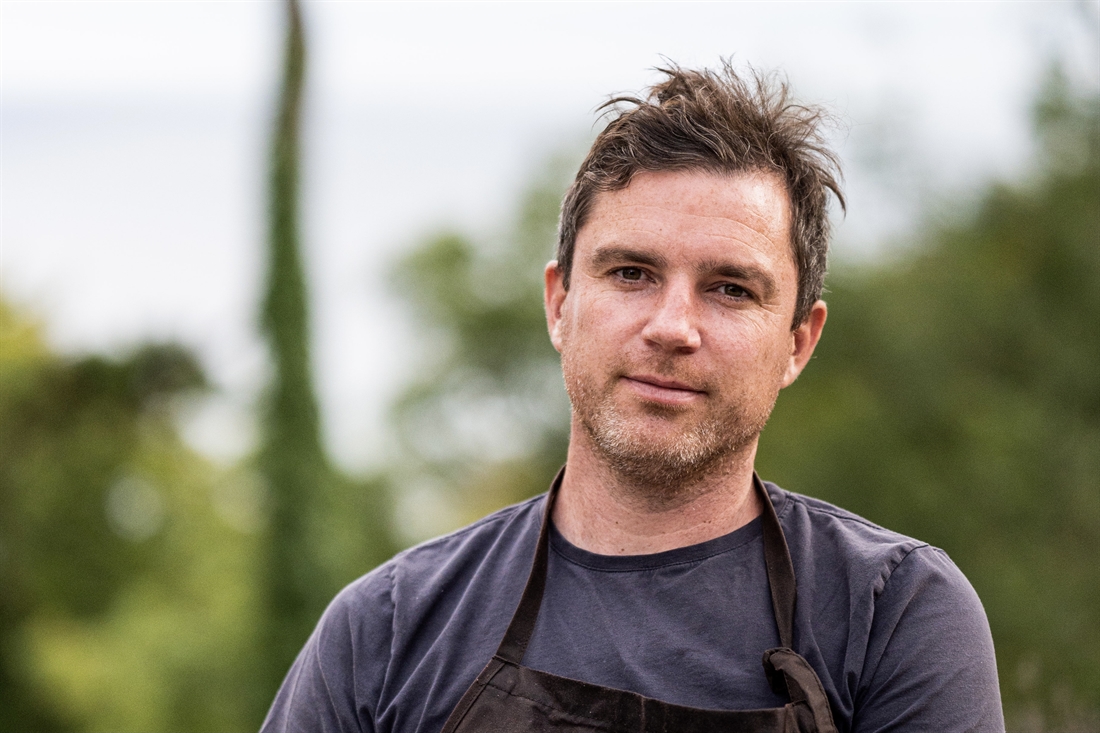
Photographers: MATT AUSTIN & ANDREW MONTGOMERY
CRISPY RABBIT WITH MARJORAM & LEMON MAYONNAISE
Bring me someone who thinks they don’t like rabbit, and I’ll fry them up something that’ll change their mind. If you’re looking for an entry-level rabbit dish, this is definitely the one.
Serves 2-4
Ingredients
1 wild rabbit, jointed
1 carrot, peeled and roughly chopped
1 celery stick, roughly chopped
1 onion, roughly chopped
2 bay leaves
2 thyme sprigs
sunflower oil, for frying
100g (3½oz) plain white flour, seasoned
1 large egg, beaten
100g (3½oz) fresh, coarse white breadcrumbs
salt and lemon wedges, to serve (optional)
For the mayonnaise
2 large egg yolks
1 heaped teaspoon Dijon or English mustard
½ small garlic clove, peeled and grated
juice and zest of ½ lemon
pinch of sugar
200ml (7fl oz) sunflower oil
50ml (1½fl oz) extra virgin olive oil
2 or 3 marjoram sprigs, leaves picked and chopped
salt and freshly ground black pepper
Method
Start with the mayonnaise (it will keep in the fridge for several days). Place the egg yolks in a food processor with the mustard, garlic, lemon juice, sugar and some salt and pepper. Start the machine and work the ingredients together for 30–40 seconds, until everything is thoroughly combined. Combine the oils in a jug, then, with your food processor running, gently start drizzling the oil into the eggs, a few drops at a time at first, then in a steady stream. Once all the oil is in, you should have a thick mayonnaise.
If it seems too thick, stir in 1–2 tablespoons of warm water. Add the marjoram and the lemon zest, and a little more seasoning, to taste. Transfer to a suitable container, cover and refrigerate.
Now for the rabbit. Place the rabbit pieces into a small–medium pan so that they fit fairly snugly. Add the carrot, celery, onion, bay leaves and thyme sprigs and cover with water. Place the pan on a high heat, and bring the contents up to a simmer. Turn down the heat and cook gently, occasionally skimming off any scum that comes to the surface, for 1½–2 hours, or until the rabbit is tender and the meat is coming away from the bone. Carefully lift out the rabbit pieces from the pan, keeping them intact, and set them aside on a plate. Allow them to cool completely, then refrigerate. Strain and reserve the stock – you can use it for any dish that needs a well-flavoured meat stock.
When you’re ready to fry, fill a large heavy-based pan to about 5cm (2in) deep with sunflower oil. Heat the oil to frying hot (when a thermometer reaches 170°C/325°F, or a cube of bread takes only a minute to fizz and crisp). Toss the rabbit pieces in the seasoned flour, then turn them in the egg and then coat them in the breadcrumbs. Deep-fry the breaded rabbit for 2–3 minutes or until golden, crisp, and hot through. Serve with a sprinkling of sea salt and the mayonnaise, and a lemon wedge, if you wish.
VENISON STEW WITH NETTLE DUMPLINGS
Venison makes a really good stew. I use the meat from the shoulder – rich, dark and deep in flavour, it responds well to slow-cooking. However, it can be lean, so here I’ve paired it up with some sweet-cured pancetta or bacon to add fat, and give the dish the right balance. The nettle dumplings are a cinch to make and bring an extra wild element to this already rather wild stew.
Serves 6-8
Ingredients
2 tablespoons extra virgin olive oil
2 onions, thinly sliced
2 celery sticks, washed, trimmed and thinly sliced
2 garlic cloves, peeled and thinly sliced
2 bay leaves
4 thyme sprigs
300g (10½oz) piece of pancetta or bacon, cut into 3–4cm (1¼–1½in) cubes
800g (1lb 12oz) venison shoulder, trimmed and cut into 4–5cm (1½–2in) cubes
100g (3½oz) plain flour, seasoned with salt and pepper
500ml (17fl oz) light ale
about 300ml (10½fl oz) beef stock or chicken stock, or water
freshly ground black pepper
for the dumplings
100g (3½oz) nettle tops
250g (9oz) self-raising flour
125g (4½oz) suet
salt and freshly ground black pepper
Method
Heat the oven to 160°C/315°F/gas mark 2–3. Heat half the oil in a large casserole over a medium heat, then add the onion, celery, garlic, bay leaves and thyme sprigs. Sweat the onions, stirring, for 8–10 minutes, until soft. Meanwhile, heat the remaining oil in a large heavy-based frying pan over a high heat. When it’s hot, turn down the heat and gently fry the pancetta or bacon, until the fat has rendered and the meat is golden. Transfer to the casserole, leaving the frying pan on the heat. Toss the venison in the seasoned flour, then add to the frying pan, in batches, transferring each batch to the casserole as soon as it is well coloured, about 4–6 minutes. Stir the casserole contents, then pour the ale over, along with enough stock or water to cover by 2–3cm (¾–1¼in). Season with pepper. Bring up to a simmer, then transfer to the oven, leaving the lid just ajar, and cook for 2½–3 hours until the meat is very tender.
Shortly before the venison is ready, make the dumplings. Bring a medium pan of water to the boil and add the fresh nettle tops.
Cook for 2 minutes until wilted, then drain and allow to cool.
Squeeze all the water from the cooked nettles into a bowl and retain. Chop the wilted leaves relatively finely. Mix the flour, suet and nettle together with some salt and pepper. Stir in enough cooled nettle water to form a soft dough – about 150–200ml (5–7fl oz). Using your hands, form the mixture into 10 spherical dumplings. Take the stew from the oven and remove the lid.
Distribute the dumplings evenly over the surface of the stew, replace the lid fully, and return the stew to the oven. Allow to cook for a further 20 minutes, then remove the lid and cook for a further 10–15 minutes, until the top of each dumpling has taken on a little colour. Remove the stew from the oven and serve with buttered greens or a lovely mixed salad.
RABBIT WITH PAPPARDELLE
This is a very simple recipe for one of the most enjoyable pasta sauces I’ve ever eaten. Cook the rabbit slowly with smoked bacon, vegetables and herbs until it’s tender enough to come away from the bone with ease. Flake the meat, then return it to the sauce. It’s as rustic as you like, and perfect year round.
Serves 4
Ingredients
2 tablespoons extra virgin olive oil
6 thick rashers of smoked streaky bacon, cut into lardons
2 celery sticks, trimmed and very finely diced
1 onion, finely chopped
4 garlic cloves, peeled and thinly sliced
2 bay leaves
6 thyme sprigs
1 rosemary sprig
1 wild rabbit, jointed about 500ml (17fl oz)
chicken stock or vegetable stock
1 quantity pappardelle pasta salt and freshly ground black pepper
Method
Heat 1 tablespoon of the olive oil in a medium casserole dish over a medium heat. When it’s hot, add the lardons and fry for 3–4 minutes, or until the bacon has given up a little fat. Add the celery, onion, garlic, bay leaves, thyme and rosemary sprigs. Cook, stirring regularly, for 10 minutes, until the vegetables are soft and just beginning to colour.
Meanwhile, heat the remaining oil in a large non-stick frying pan over a medium–high heat. When hot, add the rabbit pieces and season them all over with salt and pepper. Fry the rabbit for 6–8 minutes on each side, or until lovely and golden all over. Transfer the rabbit and any pan juices to the casserole of softening vegetables. Pour over the stock and bring up to a very gentle simmer. Place a lid on the casserole, leaving it just ajar, then cook on a low heat for 1½–2 hours, or until the meat is completely tender and comes easily away from the bone. If the pan looks a little dry during cooking, add a splash more stock or water.
When the rabbit is ready, remove the casserole from the heat and use a pair of tongs to transfer the rabbit pieces to a large plate. When the meat is cool enough to handle, pick it off the bone in shards and shreds and add it back to the pan. Stir everything well, and return the pan to the heat. Bring the sauce back up to a simmer and continue simmering until it has reached a consistency you’re happy with (I usually leave it bubbling away for about 15–20 minutes). When it’s ready, season to taste with salt and pepper.
Cook the pasta, drain, then drizzle with a little olive oil. Place equal amounts of pasta on each of four plates, then spoon over generous amounts of the rabbit sauce. Serve straight away.
ROAST WILD BOAR WITH MOLASSES,WHITE BEANS,BROWN SUGAR & MUSTARD
This immensely satisfying combination of boar and beans is cooked gently for hours, until the beans are soft and the meat is fork-tender. I once cooked a version of this dish in a great cast-iron pot in the glowing embers of a fire that we regularly stoked and raked as the hours of the evening passed. It turned out beautifully and we ate it around the smoky warmth drinking golden cider, with blankets around our shoulders. This version is cooked in the oven, but the principle is the same: a gentle, unrushed heat brings the best results. Mustard and molasses give the boar a dark, sweet flavour I really lik
Serves 4
Ingredients
25g (1oz) soft brown sugar
1 tablespoon molasses
2 teaspoons crushed coriander seeds
1 teaspoon chilli flakes
1 tablespoon English mustard
1.5kg (3lb 5oz) wild boar
200g (7oz) dried cannellini beans, soaked overnight in water
6 thyme sprigs
4 rosemary sprigs
8 bay leaves
1 garlic bulb, halved around its circumference
1 litre (1¾ pints) pork stock or chicken stock
salt and freshly ground pepper
Method
There’s not much of a method here, which is great. By simply combining a few things and whacking them in the oven, you’ll have a feast far greater than the sum of its parts.
Heat the oven to 150°C/300°F/gas mark 2. Mix the sugar, molasses, crushed coriander seeds, chilli and mustard together into a thick paste. Rub this all over the boar and set aside. Drain the soaked beans and place them in a large, deep roasting tray that is big enough to hold the boar, too. Add the herbs, garlic and stock and give it a shake. Nestle the boar, belly down, into the beans and cover loosely with a sheet of greaseproof paper, or foil. Place the roasting tray in the oven and cook the boar for 2½–3 hours, or until all the stock has been taken up by the beans and the boar is lovely and tender. (You may want to give everything a stir once or twice during cooking.) Remove the tray from the oven, then scoop out the boar and set aside on a plate. Season the beans in the tray with plenty of salt and pepper, giving them a good stir as you do so. Squeeze the soft garlic from its skin and work this through the beans too.
Serve spoonfuls of the beans alongside hunks and shards of the tender boar meat. Enjoy with good bread – and good wine.
Poached trout
This is a classy dish. I like to serve it while it’s still warm, but not hot, as part of a fine lunch spread. It’s great with crusty bread and some green leaves, and a tarragon or chive mayonnaise. It’s worth spending a little time preparing the ingredients for your court-bouillon. Not only will it impart a wonderful flavour to the fish as it cooks, but you’ll be left with the most delicious fish stock that you can use for soups, sauces, risottos, or anything else that calls for good fish stock. Freeze it in batches and use as required.
Ingredients
2 large carrots, finely sliced
2 celery sticks, finely sliced
1 large onion, finely sliced
1 leek, trimmed and thinly sliced
1 small fennel bulb, sliced
2 or 3 garlic cloves, peeled and sliced
2 glasses of white wine
3 or 4 thyme sprigs
4 bay leaves
a few parsley stalks
1 teaspoon black peppercorns
1 teaspoon fennel seeds
1 teaspoon coriander seeds
2 teaspoons fine sea salt
1 whole trout (about 1–1.5kg/2lb 4oz–3lb 5oz), gutted and cleaned
Method
You can make the court-bouillon immediately before poaching, or a day or two in advance (keep it stored in an airtight container in the fridge). Place all the ingredients except the fish into a large pan and cover with about 2 litres (3½ pints) water. Place the pan over a high heat and bring the contents up to a gentle simmer. Cook, simmering, for 25–30 minutes. Remove the pan from the heat and allow the stock to cool with all the vegetables and herbs in it. Strain the stock through a sieve into a fish kettle. (Retain the vegetables as a lovely soup base – pop them in a bag and freeze them until you need them.) At this point you could add a few more aromatics, such as bay, if you like, but it’s optional. Place the fish kettle over a medium heat and bring it up to a simmer. Place the fish on the trivet (the kettle insert) and lower it very gently into the poaching liquid. Turn down the heat to low and cook the fish for 15–20 minutes, or until the fish is just cooked through. I sometimes test this by pulling gently at the dorsal fin. If it comes away easily, the fish is cooked. Lift the trivet from the kettle and remove the fish to a large serving platter, then allow it to cool a little. You can bring the fish to the table whole, or you can cut it up and serve it in portions. Serve with buttered brown bread, good mayonnaise, and a watercress salad.
Related Articles
Get the latest news delivered direct to your door
Subscribe to Fieldsports Journal
Elevate your experience in the field with a subscription to Fieldsports Journal, the premium publication for passionate country sports enthusiasts. This bi-monthly journal delivers unparalleled coverage of game shooting, fishing and big game across the UK and beyond.
Each issue offers a stunning collection of in-depth features, expert opinions and world-class photography, all presented in a timeless yet contemporary design.
Save 10% on shop price when you subscribe, with a choice of packages that work for you. Choose from Print & Digital or Digital only with each journal delivered directly to your door or via the app every other month, plus access to past issues with the digital back issue library.






